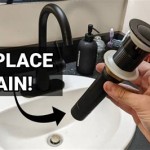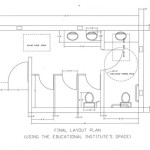Can You Vent a Bathroom Exhaust Fan Through the Soffit?
Bathroom exhaust fans are essential for maintaining a healthy and comfortable indoor environment. They effectively remove moisture, odors, and pollutants from the air, preventing mold growth, mildew, and unpleasant smells. Proper ventilation is crucial, and the choice of the exhaust vent location plays a significant role in achieving optimal performance. One common question arises: can you vent a bathroom exhaust fan through the soffit?
Venturing a bathroom exhaust fan through the soffit is possible, but it comes with certain considerations and potential drawbacks that homeowners should carefully weigh before making a decision. The feasibility and suitability of this method depend on several factors, including the local building codes, the type of soffit, and the overall ventilation strategy of the home.
Building Code Requirements
Firstly, it is essential to consult local building codes and regulations regarding bathroom exhaust fan ventilation. Many areas have strict guidelines dictating the minimum distance required between the fan outlet and any potential obstructions, such as windows or other vents. The code may also specify the type of vent material and installation techniques to ensure proper airflow and prevent potential issues.
Additionally, some jurisdictions prohibit venting through the soffit altogether, deeming it inadequate for proper ventilation. This may be due to concerns about the potential for moisture accumulation within the soffit space, which can lead to structural damage or attract pests. Therefore, adhering to local building codes is paramount to ensure a safe and compliant installation.
Soffit Type and Construction
The type and construction of the soffit also influence the suitability of venting through it. Soffits are typically made of wood, vinyl, or aluminum. Wood soffits generally require specialized venting techniques to prevent moisture damage, while vinyl and aluminum soffits might be more resistant to moisture but may still require careful planning to avoid potential issues.
The space within the soffit and the presence of insulation should also be considered. Adequate space is crucial for proper air circulation and to prevent the fan from being blocked or restricted. Insulation, if present, should be properly sealed around the vent to avoid air leakage and ensure efficient operation of the fan.
Ventilation Strategy and Potential Drawbacks
Venting a bathroom exhaust fan through the soffit may not be the most ideal solution in all cases. While it can effectively remove moisture and odors from the bathroom, it is essential to consider the overall ventilation strategy of the home. The airflow from the bathroom exhaust fan might interfere with the ventilation of other areas, especially if the soffit is shared with other rooms or the attic.
One potential drawback of venting through the soffit is the risk of moisture accumulation within the soffit space, particularly if the fan is not powerful enough to expel all the moisture. This can lead to mold growth, mildew, and structural damage. Additionally, the vent opening in the soffit can create an entry point for pests, such as rodents or insects. Therefore, careful consideration and proper insulation are crucial to minimize these risks.
Alternatives to Soffit Venting
Depending on the specific circumstances and local regulations, alternative ventilation methods might be more suitable than venting through the soffit. These alternatives include:
- Roof Vent: Venting the exhaust fan directly through the roof provides the most effective way to remove moisture and odors, minimizing the risk of moisture accumulation within the soffit space. However, it can be more complex and expensive to install.
- Wall Vent: Venting through an exterior wall is another option, typically with a vertical vent connecting the fan to the outside. This method offers a more direct path for moisture and odors to escape the house.
- Combined Ventilation: In some cases, a combination of roof vent and soffit vent can be used to create a more robust ventilation system. This can be particularly beneficial for larger bathrooms or homes with limited roof space.
The choice of ventilation method should be based on a thorough evaluation of the existing building conditions, local regulations, and the specific requirements of the project. Consulting with a qualified contractor or HVAC professional is recommended to determine the best solution for your needs and to ensure a safe and effective installation.

Bathroom Venting Through Soffit Greenbuildingadvisor

Adding A Bathroom Fan Fine Homebuilding

Do Your Exhaust Vents Terminate At Soffits Charles Buell Consulting Llc

How To Vent A Bathroom Fan Through Soffit 4 Step Guide Home Inspector Secrets

Everbilt 4 In To 6 Soffit Exhaust Vent Sevhd The Home Depot

Soffit Bath Fan Ventilation Exterior Inspections Internachi Forum

Choosing The Right Vent Cap For A Soffit Primexvents

Can Your Bathroom Fan Vent Into The Attic Or Soffit Beantown Home Improvements Inc

Best Practices Bathroom Venting Greenbuildingadvisor

Bathroom Exhaust Vents In Your San Antonio Area Home Jwk Inspections
Related Posts







